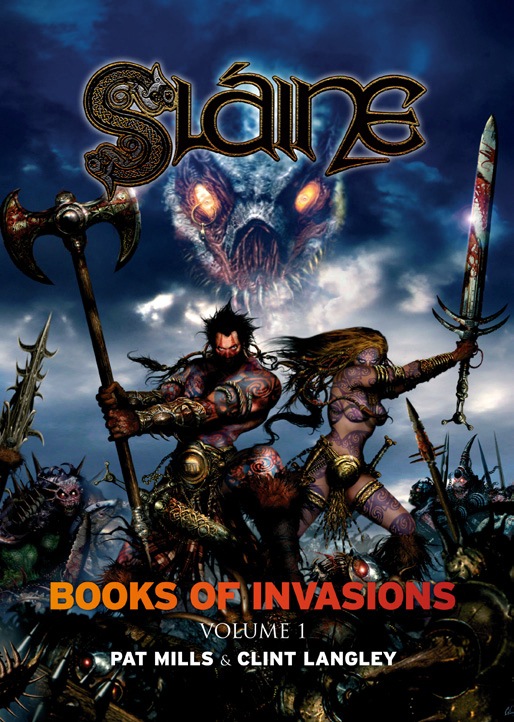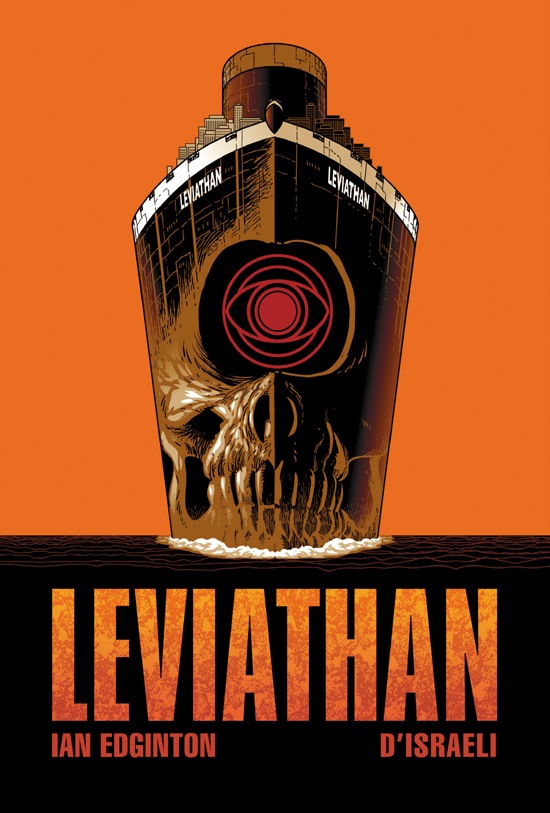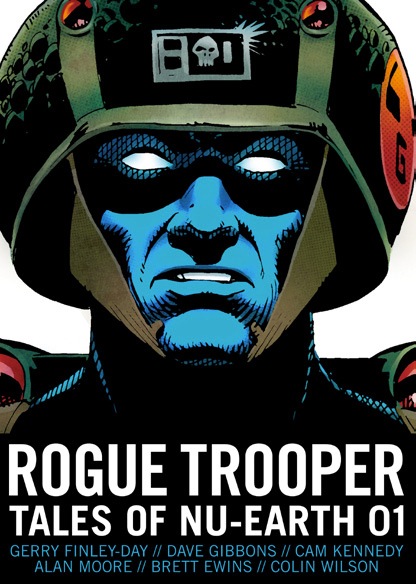The founding fathers would turn in their graves. The British Library is hosting an exhibition of publications in a medium once accused of undermining literacy, decency and the very establishment itself: comics.
I haven’t yet visited Comics Unmasked: Art and Anarchy in the UK, which has been curated by Paul Gravett, author of Comic Art, which I reviewed last month, but I have a shrewd idea of much of its contents because of my own involvement in the industry from the 1980s and ‘90s.
 |
| Deadline 3 - which published Jamie Hewlett's Tank Girl |
British comics and their creators have an anarchic spirit. In the late nineteenth century the 'Penny Dreadfuls' were sometimes considered so subversive and dangerous to the Establishment (in fomenting an industrial dispute) that at one point printing presses used for printing them were destroyed by the authorities, as documented in Martin Barker’s book Comics: Ideology, Power and the Critics.
There is a direct line from these through Fleetway’s Action comic to 2000AD, which in the late ‘70s and ‘80s saw the work of Pat Mills and John Wagner produce strips such as Nemesis the Warlock, which satirised corrupt organised religion, and Judge Dredd, which satirised just about everything including a corrupt totalitarian state (although sometimes Dredd seemed as though it was applauding the very summary dispensation of justice which it avowedly condemned).
Action was created in 1975 by Pat Mills for publishing house IPC. Soon banned for its violent content it nevertheless spawned 2000AD, the home of Judge Dredd.
 |
| Jamie's Tank Girl - whom he called a female Judge Dredd with bigger guns on speed. |
These class-ridden, patriotic comics were produced by the ultra-conservative family-owned Scottish DC Thompson publishers, for much of the twentieth century - up until the days of punk rock as staple fare for boys, a deliberate antidote to the previous, anarchic Penny Dreadfuls. Orwell describes them in depth in the article and observes their propaganda value as follows:
“the stuff is read somewhere between the ages of twelve and eighteen by a very large proportion, perhaps an actual majority, of English boys, including many who will never read anything else except newspapers; and along with it they are absorbing a set of beliefs which would be regarded as hopelessly out of date in the Central Office of the Conservative Party.”
 |
| The cover of Revolver 1, which serialised Grant Morrison's deconstruction of Dan Dare |
Common to both is the preoccupation with slapstick humour, fantasy and science fiction as a way of boggling minds and examining present-day trends taken to extremes.
Orwell himself notes the value of Sci-Fi (which he calls Scientifiction) in this fascinating sentence:
“Whereas the Gem and Magnet derive from Dickens and Kipling, the Wizard, Champion, Modern Boy, etc., owe a great deal to H. G. Wells, who, rather than Jules Verne, is the father of ‘Scientifiction’.”
You can even position later writers, influenced by these earlier names, on this spectrum, such as Alan Moore and Grant Morrison on the left, and Neil Gaiman more in centre-ground. Grant slyly subverted Dan Dare himself , imagining him as an older man sadly looking back on the glory days of space empire in the pages of Revolver in the late ‘80s.
The ‘80s was a key time, because it was then that the kids who had been brought up on the Beano and 2000AD hit adulthood and it became cool to continue reading comics. Inspired by Moore’s Watchmen and V for Vendetta, and the American Frank Miller’s Batman: Dark Knight Returns, younger artists and writers gave birth to an explosion of creativity.
 |
| The cover of Crisis issue 3 - probably the closest ever to Orwell's dream of a left wing comic. |
 |
| Pat Mills' and Carlos Ezquerra's Third World War deliberately made very cool heroes out of disabled, black, gay or female characters. |
Crisis was largely Pat Mills' brainchild. Overtly political and radical it ran the amazing anti-American Imperialism strip Third World War, which attacked CIA involvement in central and south American countries, a topic already tackled in comics by Alan Moore's and Bill Sienkiewicz's documentary graphic novel, Brought to Light.
 |
| The cover of Doc Chaos 1 by me, Lawrence Gray and Phil Elliott published by Escape |
Independent creator-owned comics sprang up all over the place, from my own satirical Doc Chaos, published by Gravett's Escape imprint, to Deadline, from Brett Ewins and Steve Dillon, which came directly from a collision between comics and the new House music club culture, the true star of which was to become Jamie Hewlett's Tank Girl. And most of us know what happened when Hewlett met Blur's Damon Albarn: Gorillaz, the first band in history that was made up of comics characters.
 |
| Peter Stanbury's and Paul Gravett's Escape magazine - beautifully designed, arty and hip. |
I must given a special mention to Don Melia and Lionel Gracey-Whitman for publishing Aargh!, Heartbreak Hotel magazine with the supplement BLAAM! Because the mere fact that this anti-homophobic publication could be a comic was testimony to how far the medium had come since the days of Wizard and Hotspur weekly comics in which homosexuality was a heavily suppressed element. Here is Orwell describing a cover image: “ a nearly naked man of terrific muscular development has just seized a lion by the tail and flung it thirty yards over the wall of an arena”.
 |
| Heartbreak Hotel issue 5 cover by Duncan Fegredo |
 |
| The first comic explicitly for black people, Sphinx |
 |
| Repossession Blues from the pages of Blaam! |
 |
| A cover of chaos magick journal Chaos International which shows the use of comics iconography - the exchange of ideas went both ways. |
Alan only went public on this more recently, but Grant overtly used his research in long-running strips such as the intensely surreal Doom Patrol and subsequently The Invisibles, both for DC.
It is not necessary to believe in any of the gods and forces invoked by magical ritual in chaos magick to utilise its effects. The point for all of us was that Nothing is Forbidden, Everything is Permitted, to use Aleister Crowley’s mantra. Chaos magick provided an almost limitless kit of tools to access the far reaches of the imagination. I learned my tricks from a group that met every week in Greenwich, above Bulldog’s café, from the legendary Charlie Brewster, aka Choronzon 666.
I used this massive wellspring of creativity when writing The Z-Men for Brendan McCarthy. Brendan was a maverick comics artist who started work in 2000AD, later becoming like many comics artists a film storyboarder, who was renowned for his psychedelic, mystical artwork.
All of us were also heavily influenced by Dada and Surrealism – this was the premier topic of my undergraduate degree. It is very obvious in Grant’s Doom Patrol - just read my favourite story The Painting That Ate Paris; and how else could you come up with a superhero who is an entire street (named - of course - Danny)?
 |
| Pure anarcho-comics: Hooligna Press & Pete Mastin's Faction File collected from the pages of squatting magazine Crowbar - back full circle to the aims of the Penny Dreadfuls |
I attribute all of their success not just to their supreme storytelling abilities but to their political views and their involvement in anything occult, arcane and extreme, because in these genres of comics, what readers demand is out-there imagination – and it takes some serious head-space distorting tricks to cultivate a mind that can repeatedly and frequently, on demand, to a punishing production schedule, come up with the mind-boggling concepts, characters and storylines required.
These lessons were not lost on the more recent wave of massively successful British writers, such as Warren Ellis and Brian Hitch, the creators of The Authority, (just read Warren Ellis' Transmetropolitan for a taste of his brand of anarchy).
And I believe there are lessons here for all writers and artists who aim at children and teens, that most demanding of all audiences, to help them feed and stoke the furnaces of creativity and imagination.
I could even attempt to sum them up in the following seven guidelines. Bear in mind that these are methods I am suggesting, and in no way am I advocating tackling a particular kind of subject matter. These are ways of researching, preparing to write and draw, and of writing and drawing itself:
- Feed your mind with stuff from the far reaches of experience; and apply that to the everyday.
- You can’t be too extreme.
- JG Ballard's maxim: follow your obsessions.
- Never censor yourself – leave it to someone else.
- Boggle minds.
- Maximise drama.
- Above all - don’t take it too seriously.






Well Judge Dredd Case Files #5 is a must buy. Block Mania and the Apocalypse War are darn near perfect Dredd stories, they’re both over-the-top, turn-it-up-to-11 action but manage to ground themselves in real and sometimes tragic characters. Seriously, buy it.
I’ve heard good things about Rogue Trooper but never read it, so I may give it a try.
Anyone read Judge Dredd Inferno, Morrison and Millar would seem to make it an easy sell.
I’ve read a little bit of Rogue Trooper and liked it. Dave Gibbons are never hurts, either. If 400 pages isn’t the full original sequence, it’s got to be a good chunk of it.
The cover for “Leviathan” looks a lot like the movie poster for Ghost Ship (2002). Also I can’t think of the name but I remember a horror novel that had a similar cover in the 90s.
Cry of the Werewolf is pretty awesome, as is Leviathan. But the Millar and Morrison Dredd was…not great. Not quite ‘Garth Ennis hasn’t worked out he can write about things other than Drink and Ireland yet’ bad but close.
@Pete, thanks. how is Morrison’s Crusade? I’m thinking of ordering but, I too once said ‘Garth Ennis on Dredd surely this must be awesome!’
US $19.99/Canada $22.99
$19.99 US currently converts to $19.90 Canadian.
I don’t know why publishers continue to put prices on their books that are years out of date.
Morrison’s Crusade is arguably one of the worst Judge Dredd Stories ever published. It is from the mid to late 90’s when 2000ad was singuarly terrible.
The Colin Wilson art of Rogue Trooper makes it a must have.
@Barney
Say what you will about Leviathan’s cover, its the best designed cover of the bunch.
Is crusade worse than Judgement Day? Judgement Day is pretty much my floor for Dredd stories.